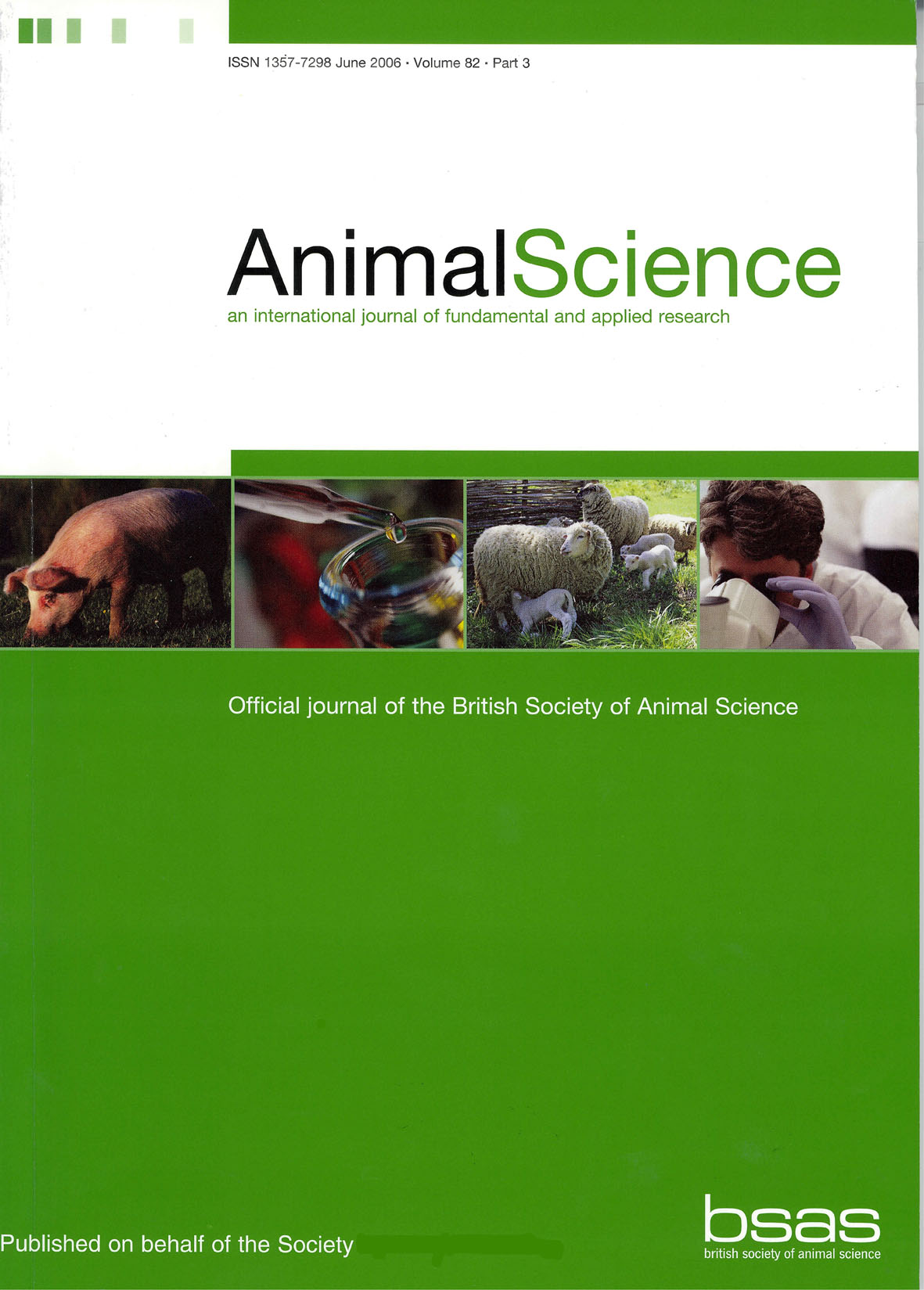Article contents
Calcium hydroxide treatment of malt distillers' grains 2. Effects on apparent digestibility in vivo, intake and performance in sheep
Published online by Cambridge University Press: 02 September 2010
Abstract
The effects of calcium hydroxide (Ca(OH)2 )treatment of malt distillers' grains (MDG) on apparent digestibility in vivo, food intake and lamb performance were measured in three experiments. Experiment 1 measured effects on intake and apparent digestibility of wet MDG either untreated (C), mineralized with a high-calcium mineral (M), Ca(OH)2 treated at ambient temperature (L) or at 70°C for 72 h (LH) and offered ad libitum to mature wether sheep (approx. 75 kg live weight). Dry matter (DM) intakes for MDG were 1251,1585,1838 and 1889 (s.e. 93) g/day for C, M, L and LH respectively when given with 780 g DM per day of a standard complete diet (diet A). Corresponding values for whole diet organic matter (OM) apparent digestibility when MDG was given at a fixed rate (1250 g DM per day) with a standard diet (660 g DM per day diet A) were 049, 049, 0·58 and 0·60 (s.e. 0·008) respectively. Experiment 2 compared mineralized wet MDG (M) with a prototype dried food made from Ca(OH)2-treatedensiled MDG (neutralized with NaOH before treatment) held at 60°C for 18 h before drying (NID) and a proprietary lamb finishing compound (PC). The supplements were offered at an increasing rate (350 g DM per day to 1200 g DM per day) to 30 Blackface lambs of approximately 31 kg initial live weight, penned in pairs, and given ad libitum access to hay and water. Mean DM intakes (g DM per day) to day 60 for supplements were 925, 750 and 934 (s.e. 19) and for hay were 258, 200 and 311 (s.e. 17) for NID, M and PC respectively. Corresponding values for live-weight gain (g/day) were 136, 123 and 130 (s.e. 11); for condition score (day 59) were 3·9, 3·6 and 4·0 (s.e. 0·06) and for number of lambs finished at day 60 were 8, 2 and 10. Experiment 3 evaluated the apparent digestibility and effects on rumen function of NID, M and PC fed at a fixed rate with chopped hay (804 g DM per day supplement + 396 g DM per day hay) to rumen fistulated wethers (approx. live weight 70 kg). Apparent digestibility values for OM were 0·63, 0·53 and 0·65 (s.e. 0·015) and for neutral-detergent fibre were 0·69, 0·55 and 0·57 (s.e. 0·037) for NID, M and PC respectively. Rumen pH, volatile fatty acid concentrations or hay digestibility in sacco were not significantly affected by supplement. Ca(OH)2 treatment greatly improved the nutritional characteristics of MDG giving substantial improvements in apparent digestibility, intake and performance.
Information
- Type
- Research Article
- Information
- Copyright
- Copyright © British Society of Animal Science 1992
References
- 2
- Cited by

